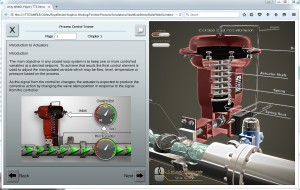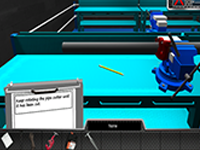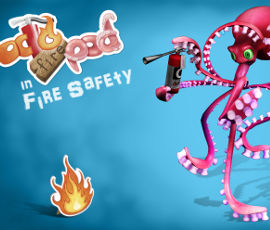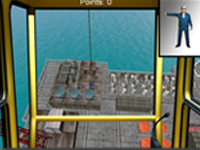 Advances in technology have made way for online simulations of environments allowing us to perform interactive learning tasks that previously required expensive and elaborate mock-ups of equipment or training devices. The use of virtual environments to train personnel is highly effective and cost efficient. Technology Transfer Services develops several categories of interactive learning to match the needs of the individual to their most effective learning method.
Advances in technology have made way for online simulations of environments allowing us to perform interactive learning tasks that previously required expensive and elaborate mock-ups of equipment or training devices. The use of virtual environments to train personnel is highly effective and cost efficient. Technology Transfer Services develops several categories of interactive learning to match the needs of the individual to their most effective learning method.
3-D Visual Procedure
Technicians tend to be visual learners. They are quick to look at the pictures in a procedure before reading the text. A 3-D visual procedure uses animations to accurately detail the steps. Each written step is accompanied by a visual demonstration. In this procedure, the bracket for a laser alignment tool is being assembled for the performance of a shaft alignment on a motor and pump assembly. The animation can also be narrated for further clarification.
Security
This virtual world simulates evacuation and security procedures for new personnel, training them in a customized environment. You may take a virtual tour of the environment or simulate hazardous scenarios from a pre-made list, allowing for better preparation for these situations. To view a video of this simulation, click here or on the thumbnail to the right.
Videos
Videos can be used to replace instructor training or to supplement it. People or equipment can be videotaped to demonstrate a task or proper operation of equipment. In our examples, we show the use of an instructor in a video to supplement other training. Videos can also include animation and complex computer graphics to combine several environments as shown in the Under Pressure video.
Customized Program Development
Effective skill and knowledge transfer begins with an analysis of the tasks performed by the target audience and then ultimately translating them into learning objectives to develop an effective learning strategy.
Our competitors talk about learning strategies that include advanced learning technologies – we deliver it. Our award-winning, innovative learning strategies include engaging and effective use of technology from 3-D simulations to avatar-based virtual worlds. Moreover, we typically blend applications of learning technology with traditional instructional delivery strategies to create optimal skill and knowledge transfer to achieve extraordinary business results.
As an IACET Authorized Provider that follows a rigorous instructional design methodology verified to meet the IACET/ANSI standard, TTS excels at the creation and deployment of technology based learning solutions.
The learning strategy is based on the learning objectives. Each learning objective is met by the development of a learning object. The learning strategy for a single learning objective can vary from those related learning objects that comprise a course or program. When the delivery strategy differs between learning objects within a single course, the course is said to be a blended or mixed media course or program.
A learning strategy is defined by the combination of four aspects:
- Learning Environment
- Instructional Strategy
- Modality
- Media
The Learning Environment is the time and place of learning to achieve the learning objective(s). A learning environment may be:
- Classroom – A classroom environment is one with one or more learners
- Work (On-the-job) – A work environment is the actual place of physical performance of the job or role of the learner.
- Virtual — A virtual environment is any environment in which the learner is fully immersed in an alternate or modeled environment, whether physical or computer generated. The defining characteristic of virtual worlds is immersion through the user interactions in the virtual world by means of an avatar and is generally persistent with opportunity to interact with other users through their respective avatars.
- “Anywhere “ – An “anywhere” environment refers to an environment not limited by a specific physical or virtual location, but may be constrained by other environmental factors such as computer requirements, Internet access, mobile devices, or printed materials.
Learning Quests
 A Learning Quest is a simulated interactive learning environment for the performance of a specific task. A student is provided instruction for a task and must follow the sequence of steps. Feedback is provided for incorrect steps. Process time can be limited as well as the number of mistakes allowed during performance. The student may repeat the Learning Quest to increase learning.
A Learning Quest is a simulated interactive learning environment for the performance of a specific task. A student is provided instruction for a task and must follow the sequence of steps. Feedback is provided for incorrect steps. Process time can be limited as well as the number of mistakes allowed during performance. The student may repeat the Learning Quest to increase learning.
The Learning Quests provide hands-on training without the need for a second person guiding the trainee. Learning Quests can be developed for custom applications
Serious Games
 Serious games make it fun to learn topics that require memorization of facts. The repetition and quick thinking required to “win” the game makes the memorization enjoyable.
Serious games make it fun to learn topics that require memorization of facts. The repetition and quick thinking required to “win” the game makes the memorization enjoyable.
Simulations
 Simulations put the student in a game-type interactive learning environment that reacts to the tasks performed and selections made. Our simulations can be used for Operations and Maintenance personnel. Simulations provide real-time interaction and require decision making based on the situation presented.
Simulations put the student in a game-type interactive learning environment that reacts to the tasks performed and selections made. Our simulations can be used for Operations and Maintenance personnel. Simulations provide real-time interaction and require decision making based on the situation presented.

